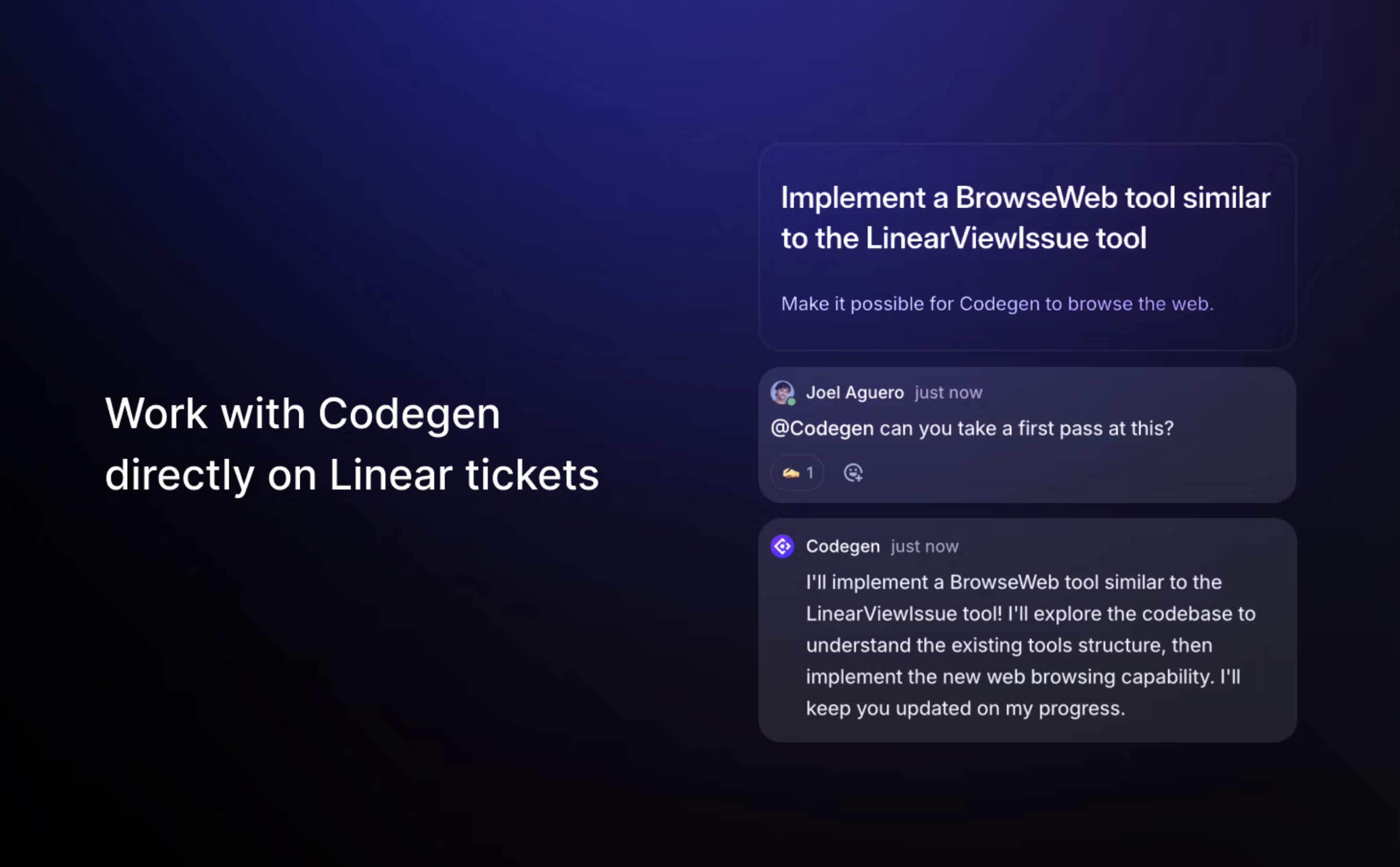
Installation
Connect your Linear workspace to Codegen to enable agent interactions.Connect Linear Workspace
Authorize Codegen to access your Linear workspace via the API settings.
API access allows agents to interact with issues and projects according to
your permissions in Linear.
Capabilities
The Linear integration provides comprehensive project management capabilities:- Create and update issues automatically - Generate new tasks and update existing ones based on development needs
- Track development progress - Monitor and report on the status of ongoing work
- Link code changes to tickets - Connect GitHub pull requests and commits directly to Linear issues
- Sync status updates - Keep issue statuses current as work progresses through different stages
- Multi Agent Systems: Create sub-issues and assign child agents to break down complex tasks into manageable pieces. Learn more.
Permissions
The Codegen Linear integration requires the following permissions:- Create issues for your workspace - Generate new tasks and tickets as needed
- Create issue comments and discussions - Provide updates, ask questions, and facilitate collaboration
- Read access to your workspace data - Access existing issues, projects, and team information
- Write access to update issues and projects - Modify issue status, assignees, and project details
- Assign issues and projects to teams - Route work to appropriate team members
- Mention app in issues and documents - Enable notifications and cross-references
- Receive realtime updates about workspace changes - Stay synchronized with workspace activity
How Agents Use Linear
Agents use the Linear integration to streamline project management:- Track Work: Automatically update the status of issues they are working on.
- Link Code: Connect implemented changes (GitHub PRs) directly to the relevant Linear issue.
- Provide Updates: Post comments on issues with progress reports, results, or questions.
- Create Tasks: Generate new issues for follow-up work, bugs discovered, or sub-tasks.

